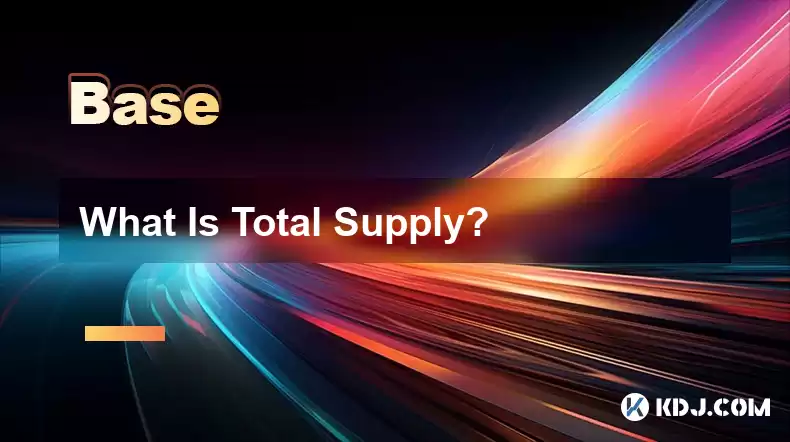-
 Bitcoin
Bitcoin $115000
0.12% -
 Ethereum
Ethereum $3701
4.50% -
 XRP
XRP $3.081
2.99% -
 Tether USDt
Tether USDt $0.0000
-0.01% -
 BNB
BNB $767.9
1.45% -
 Solana
Solana $169.5
3.13% -
 USDC
USDC $0.9999
0.01% -
 Dogecoin
Dogecoin $0.2106
4.30% -
 TRON
TRON $0.3334
1.62% -
 Cardano
Cardano $0.7564
2.54% -
 Stellar
Stellar $0.4165
0.76% -
 Hyperliquid
Hyperliquid $38.75
0.25% -
 Sui
Sui $3.593
3.00% -
 Chainlink
Chainlink $17.08
3.59% -
 Bitcoin Cash
Bitcoin Cash $573.6
4.35% -
 Hedera
Hedera $0.2508
-0.84% -
 Avalanche
Avalanche $23.07
6.46% -
 Ethena USDe
Ethena USDe $1.001
-0.02% -
 Litecoin
Litecoin $120.8
8.17% -
 UNUS SED LEO
UNUS SED LEO $8.943
-0.32% -
 Toncoin
Toncoin $3.400
-5.60% -
 Shiba Inu
Shiba Inu $0.00001255
1.54% -
 Uniswap
Uniswap $9.908
6.32% -
 Polkadot
Polkadot $3.718
2.10% -
 Monero
Monero $303.0
-0.74% -
 Dai
Dai $0.9999
-0.02% -
 Bitget Token
Bitget Token $4.392
0.91% -
 Cronos
Cronos $0.1403
6.31% -
 Pepe
Pepe $0.00001076
1.13% -
 Aave
Aave $267.2
1.80%
What Is Total Supply?
The total supply of a cryptocurrency, determined by factors such as purpose and technical limitations, has significant implications for its value, liquidity, and potential for inflation or deflation.
Dec 16, 2024 at 10:07 pm

Key Points:
- Definition of Total Supply
- Calculation of Total Supply
- Significance of Total Supply
- Factors Influencing Total Supply
- Potential Impact of High or Low Total Supply
What Is Total Supply?
Total supply, in the context of cryptocurrencies, represents the maximum possible number of units of a particular cryptocurrency that will ever exist. It is a fixed value, established at the time of the cryptocurrency's creation, and cannot be altered or increased arbitrarily.
Calculation of Total Supply
The total supply of a cryptocurrency is primarily determined by its protocol or governing rules. Different cryptocurrencies employ different methods to calculate their total supply:
- Pre-mined: In this case, all or a significant portion of the total supply is created and distributed upfront, typically through a genesis block event. Examples include Bitcoin and Litecoin.
- Mining: The total supply is gradually released into circulation through a mining process, where miners verify and process transactions in exchange for newly created coins. Examples include Ethereum and Bitcoin Cash.
- Proof-of-Stake: In proof-of-stake systems, coins are created and distributed based on the amount of cryptocurrency held by validators. The total supply may be fixed or adjustable depending on the cryptocurrency's protocol.
- Hybrid Models: Some cryptocurrencies combine multiple methods to determine their total supply. For instance, Binance Coin combines pre-mining with additional token creation through a burning mechanism.
Significance of Total Supply
The total supply of a cryptocurrency has several important implications:
- Scarcity and Value: A limited total supply can contribute to scarcity and potentially increase the value of the cryptocurrency over time, as demand for a finite asset exceeds its availability.
- Token Distribution: The distribution of the total supply influences the ownership structure of the cryptocurrency and the level of decentralization. A widely distributed supply is generally considered more decentralized and less susceptible to manipulation.
- Inflation and Deflation: Cryptocurrencies with a fixed total supply cannot experience inflation, as no new tokens can be created to devalue the existing supply. In contrast, cryptocurrencies with an adjustable total supply may experience inflation or deflation depending on the issuance and burning policies.
- Market Capitalization: The total supply plays a role in determining the market capitalization of a cryptocurrency. It is calculated by multiplying the total supply by the current market price of the cryptocurrency.
Factors Influencing Total Supply
Several factors can influence the total supply of a cryptocurrency:
- Purpose and Use Case: The intended purpose and use case of a cryptocurrency may determine its initial and future total supply. For example, cryptocurrencies designed as a medium of exchange may have a larger total supply compared to those intended for specific niche applications.
- Technical Limitations: The underlying technology and consensus mechanisms employed by a cryptocurrency can impose limits on its total supply. For instance, cryptocurrencies that rely on a proof-of-work consensus mechanism may face practical challenges in increasing their total supply beyond a certain point.
- Community Consensus: In certain cases, the cryptocurrency community may vote or propose changes to the total supply through a governance or hard fork process. This could result in adjustments to the total supply, although such changes are relatively rare.
Potential Impact of High or Low Total Supply
The total supply of a cryptocurrency can have both positive and negative implications:
High Total Supply:
- Reduced Scarcity: A high total supply implies a larger number of units in circulation, reducing the potential for scarcity and rapid value appreciation.
- Increased Liquidity: A higher supply generally results in greater liquidity, making it easier to buy or sell the cryptocurrency in large quantities.
- Potential for Inflation: Cryptocurrencies with a high total supply may be more susceptible to inflation if the issuance rate exceeds the demand for the cryptocurrency.
Low Total Supply:
- Enhanced Scarcity: A low total supply contributes to scarcity, potentially increasing the value of the cryptocurrency over time, as it becomes more desirable for investors seeking a limited-supply asset.
- Reduced Liquidity: A smaller supply can limit liquidity, making it more difficult to buy or sell large amounts of the cryptocurrency without significantly affecting the market price.
- Deflationary Pressure: Cryptocurrencies with a fixed or limited total supply may experience deflationary pressure if the demand exceeds the available supply.
FAQs:
Q: How can I verify the total supply of a cryptocurrency?
- A: The total supply is typically documented in the cryptocurrency's whitepaper, technical documentation, or blockchain explorer.
Q: Is total supply the same as circulating supply?
- A: No. Circulating supply refers to the total number of coins currently in circulation, which may be less than the total supply due to coins being locked in smart contracts, lost, or burned.
Q: Can cryptocurrencies with a low total supply reach high market valuations?
- A: Yes. A low total supply, coupled with high demand, can drive up the market value of a cryptocurrency, even if its starting price is relatively low.
Q: Are all cryptocurrencies with a finite total supply deflationary?
- A: Not necessarily. Deflation only occurs if the demand for the cryptocurrency exceeds the available supply and sellers are unwilling to sell at lower prices.
Q: Can the total supply of a cryptocurrency be changed after its launch?
- A: Typically, the total supply is fixed and cannot be altered. However, some cryptocurrencies, through governance mechanisms or hard forks, may allow for adjustments to their total supply in response to community consensus or protocol changes.
Disclaimer:info@kdj.com
The information provided is not trading advice. kdj.com does not assume any responsibility for any investments made based on the information provided in this article. Cryptocurrencies are highly volatile and it is highly recommended that you invest with caution after thorough research!
If you believe that the content used on this website infringes your copyright, please contact us immediately (info@kdj.com) and we will delete it promptly.
- Bitcoin, Fed Rate Cut, and Crypto Stocks: A New Yorker's Take
- 2025-08-05 14:50:12
- Police, Cryptocurrency, Bitcoin Windfall: Unexpected Gains and Cautionary Tales
- 2025-08-05 15:30:12
- MAGACOIN: The Next Shiba Inu ROI? A Crypto Presale Deep Dive
- 2025-08-05 15:30:12
- Bitcoin, Kiyosaki, and the August Curse: Will History Repeat?
- 2025-08-05 14:50:12
- Crypto Airdrops: Your August 2025 Guide to Free Tokens & Opportunities
- 2025-08-05 13:45:13
- Luxury Dining Reimagined: St. Regis Singapore & Marriott's Culinary Celebration
- 2025-08-05 13:45:13
Related knowledge

What is the difference between CeFi and DeFi?
Jul 22,2025 at 12:28am
Understanding CeFi and DeFiIn the world of cryptocurrency, CeFi (Centralized Finance) and DeFi (Decentralized Finance) represent two distinct financia...

How to qualify for potential crypto airdrops?
Jul 23,2025 at 06:49am
Understanding What Crypto Airdrops AreCrypto airdrops refer to the distribution of free tokens or coins to a large number of wallet addresses, often u...

What is a crypto "airdrop farmer"?
Jul 24,2025 at 10:22pm
Understanding the Role of a Crypto 'Airdrop Farmer'A crypto 'airdrop farmer' refers to an individual who actively participates in cryptocurrency airdr...

What is the difference between a sidechain and a Layer 2?
Jul 20,2025 at 11:35pm
Understanding the Concept of SidechainsA sidechain is a separate blockchain that runs parallel to the main blockchain, typically the mainnet of a cryp...

What is the Inter-Blockchain Communication Protocol (IBC)?
Jul 19,2025 at 10:43am
Understanding the Inter-Blockchain Communication Protocol (IBC)The Inter-Blockchain Communication Protocol (IBC) is a cross-chain communication protoc...

How does sharding improve scalability?
Jul 20,2025 at 01:21am
Understanding Sharding in BlockchainSharding is a database partitioning technique that is increasingly being adopted in blockchain technology to enhan...

What is the difference between CeFi and DeFi?
Jul 22,2025 at 12:28am
Understanding CeFi and DeFiIn the world of cryptocurrency, CeFi (Centralized Finance) and DeFi (Decentralized Finance) represent two distinct financia...

How to qualify for potential crypto airdrops?
Jul 23,2025 at 06:49am
Understanding What Crypto Airdrops AreCrypto airdrops refer to the distribution of free tokens or coins to a large number of wallet addresses, often u...

What is a crypto "airdrop farmer"?
Jul 24,2025 at 10:22pm
Understanding the Role of a Crypto 'Airdrop Farmer'A crypto 'airdrop farmer' refers to an individual who actively participates in cryptocurrency airdr...

What is the difference between a sidechain and a Layer 2?
Jul 20,2025 at 11:35pm
Understanding the Concept of SidechainsA sidechain is a separate blockchain that runs parallel to the main blockchain, typically the mainnet of a cryp...

What is the Inter-Blockchain Communication Protocol (IBC)?
Jul 19,2025 at 10:43am
Understanding the Inter-Blockchain Communication Protocol (IBC)The Inter-Blockchain Communication Protocol (IBC) is a cross-chain communication protoc...

How does sharding improve scalability?
Jul 20,2025 at 01:21am
Understanding Sharding in BlockchainSharding is a database partitioning technique that is increasingly being adopted in blockchain technology to enhan...
See all articles

























































































